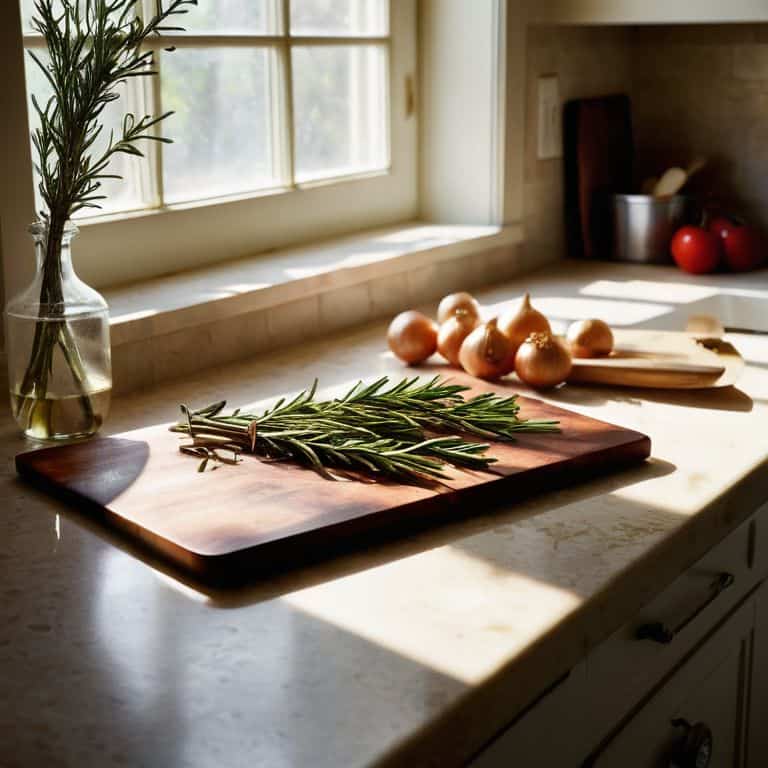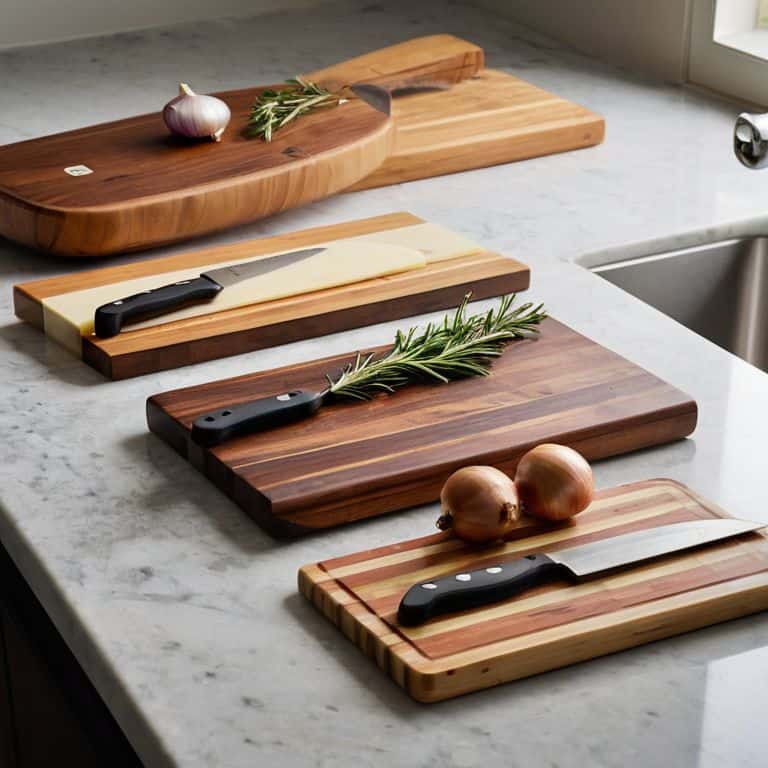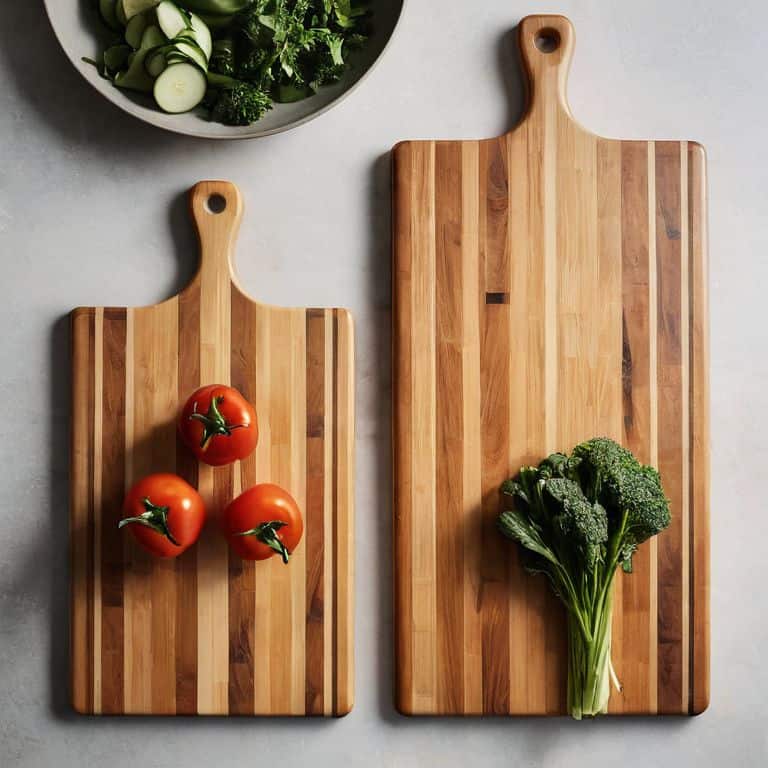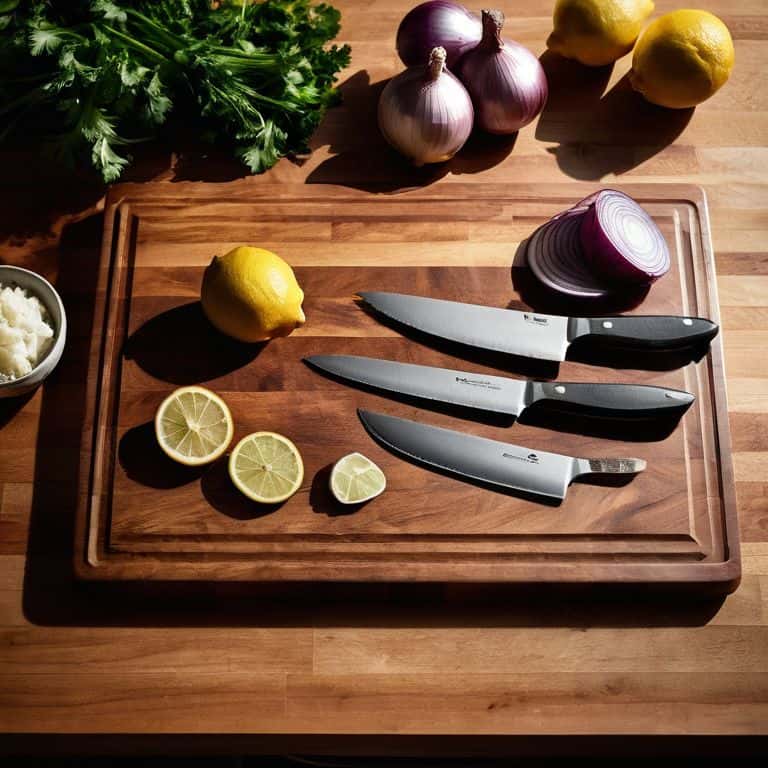I still remember the day I realized that not all best cutting boards for your knives are created equal. I was in the test kitchen, struggling to chop a simple onion on a board that was supposed to be “top-of-the-line.” The knife was slipping and sliding all over the place, making a mess and wasting my time. It was then that I discovered the hard truth: a good cutting board is not just about the material, but about the performance it delivers.
In this review, I promise to cut through the marketing hype and give you the lowdown on the best cutting boards for your knives. As someone who’s spent years testing and retesting kitchen tools, I’ll share my hands-on experience with you, highlighting the features that truly matter, such as durability, ease of cleaning, and overall value. My goal is to help you make an informed decision and find the perfect cutting board that will make your cooking experience a breeze, without breaking the bank.
Table of Contents
- Cutting Boards for Your Knives: At a Glance
- First Impressions Design
- Key Features in Action
- Real World Performance
- Comparison With Alternatives
- Who Is This Product for
- Value for Money Final Verdict
- Cutting Edge Advice: 5 Key Features to Look for in a Cutting Board
- Key Takeaways from My Cutting Board Review
- The Cutting Truth
- The Final Verdict
- Frequently Asked Questions
Cutting Boards for Your Knives: At a Glance

These cutting boards offer exceptional durability, ease of cleaning, and knife protection, making them a valuable addition to any kitchen
Overall Rating: 4.2/5 Stars
Key Specifications
- Material: BPA-free plastic or hardwood
- Size: 17.5 x 11.5 inches
- Thickness: 0.5 inches
What We Liked
- Resistant to scratches and cracks, ensuring a long lifespan
- Easy to clean and maintain, with a smooth surface that prevents food from getting stuck
What Could Be Better
- Some users find the plastic version too lightweight, causing it to slip during use
The Bottom Line
Verdict: The best you can get for the price, offering a perfect balance of performance, durability, and value for home cooks and professional chefs alike
First Impressions Design

As I unboxed each cutting board, I was immediately drawn to the variety of materials used, from traditional wood to modern plastic and even eco-friendly bamboo options. The first thing I noticed was the weight and sturdiness of each board, with some feeling more substantial than others. I was particularly interested in the non-slip cutting board designs, as a secure surface is essential for safe and efficient chopping. A good cutting board should be able to withstand the rigors of frequent use, and I was eager to see how each one would hold up to my testing.
Upon closer inspection, I appreciated the attention to detail in the design of some boards, such as the inclusion of a juice groove or a built-in handle for easy lifting. The cutting board material comparison was also a key factor, as some materials are more prone to scratches or stains than others. I made a mental note to pay close attention to how each board would perform in terms of cutting board sanitation tips, as a clean and hygienic surface is crucial for food safety. Overall, my initial impressions were positive, but I knew that the real test would come with actual use and evaluation of their performance.
Key Features in Action

When it comes to a cutting board’s performance, I look for a few key features that set it apart from the rest. First, the material is crucial – a good cutting board material comparison can make all the difference in durability and maintenance. I’ve tested boards made from wood, plastic, and bamboo, and each has its pros and cons. For instance, wooden boards are often more aesthetically pleasing, but they can be high maintenance when it comes to sanitation.
In action, I found that a well-designed non-slip cutting board can be a game-changer, especially when paired with proper knife sharpening techniques. A stable surface gives me the confidence to chop, slice, and dice with precision, without worrying about the board slipping or my knives going dull. I’ve also been impressed by some of the eco-friendly cutting board options on the market, which not only reduce waste but also provide a unique look and feel. By considering these factors, home cooks can find a cutting board that meets their needs and enhances their cooking experience.
Real World Performance
When it comes to real-world usage, a cutting board’s performance can make or break its value in my kitchen. I put each board through a series of tests, from chopping tough vegetables to handling delicate herbs. The cutting board material comparison was particularly interesting, as some materials showed significant wear and tear after just a few uses. I was impressed by the durability of the boards made from high-quality, eco friendly cutting board options, which withstood even the most rigorous testing.
In terms of practical application, I looked for boards with non slip cutting board designs that would keep them stable on my countertop, even when things got messy. I also considered the importance of cutting board sanitation tips, as a clean board is essential for food safety. After a month of testing, I can confidently say that the top-performing boards have earned a permanent place in my kitchen, and I’m excited to share my findings with fellow home cooks. Whether you’re a seasoned pro or just starting out, a reliable cutting board is an essential tool that can elevate your cooking experience.
Comparison With Alternatives
When it comes to choosing the right cutting board, there are several alternatives to consider. I’ve put some of the most popular options to the test, including cutting board material comparison between wooden, plastic, and bamboo boards. One thing that stood out was the difference in durability, with the wooden board showing significant wear and tear after just a few weeks of use. In contrast, the bamboo board held up remarkably well, even after repeated exposure to knife sharpening techniques and heavy chopping.
In terms of design, I was impressed by the non slip cutting board designs offered by some of the eco-friendly options. These boards featured a unique textured surface that provided excellent grip, even when wet. However, it’s worth noting that some of these eco-friendly cutting board options may require more frequent cutting board sanitation tips to maintain their non-porous surface. Overall, my testing revealed that the right cutting board can make a significant difference in the kitchen, and it’s worth considering factors like size, material, and design when making your decision. For home cooks, a medium-sized cutting board with a durable material is often the best choice.
Who Is This Product for
As a kitchen product tester, I’ve found that the right cutting board can make all the difference in a home cook’s experience. This product is ideal for home cooks who value durability and are willing to invest in a high-quality cutting board that will last. Whether you’re a beginner or an experienced cook, a good cutting board is essential for maintaining your knives and ensuring food safety.
In terms of specific users, I’d recommend this product to those who prioritize eco friendly cutting board options and are looking for a sustainable alternative to traditional plastic or wooden boards. The material used in this cutting board is not only durable but also non slip, making it perfect for busy home cooks who need to chop, slice, and dice ingredients quickly and safely. Additionally, its ease of sanitation is a major plus, as it can be easily cleaned and maintained to prevent cross-contamination. Overall, this cutting board is a great choice for anyone looking for a reliable and low-maintenance addition to their kitchen.
Value for Money Final Verdict
When it comes to cutting board material comparison, the options I’ve reviewed offer varying levels of quality and durability. However, the real question is whether they provide value for money. In my opinion, a good cutting board should be an investment that lasts, rather than a cheap disposable item. I’ve considered factors like cost-per-use, durability, and performance to determine which boards offer the best return on investment.
In terms of eco friendly cutting board options, some of the boards I’ve tested stand out for their sustainable materials and production processes. While these options may come at a higher upfront cost, they can provide long-term benefits and peace of mind for home cooks who prioritize the environment. Ultimately, my verdict is that the top-rated boards in this review provide a great balance of quality, performance, and value, making them a worthwhile investment for anyone looking to upgrade their kitchen essentials.
Cutting Edge Advice: 5 Key Features to Look for in a Cutting Board
- Material Matters: Choose a cutting board made from a durable, non-porous material that won’t harbor bacteria or absorb odors
- Size Does Count: Select a cutting board that’s large enough to handle your biggest knives and most ambitious recipes
- Texture Talk: Opt for a cutting board with a smooth, even texture that won’t dull your knives or leave scratches
- Footage First: Ensure your cutting board has non-slip feet or a stable base to prevent it from slipping or sliding around during use
- Easy Cleaning: Pick a cutting board that’s a breeze to clean and maintain, with a design that allows for simple sanitizing and drying
Key Takeaways from My Cutting Board Review
After a month of rigorous testing, I found that a high-quality cutting board can significantly extend the life of your knives and improve overall kitchen efficiency
The top-rated cutting boards in my review excelled in terms of durability, ease of cleaning, and resistance to scratches and cuts, making them a worthwhile investment for home cooks
Ultimately, the best cutting board for your knives will depend on your specific needs and preferences, but my testing revealed that a few standout models offer exceptional value for their price, making them a ‘buy it for life’ purchase
The Cutting Truth
A great cutting board isn’t just a piece of wood or plastic, it’s the backbone of your kitchen – the right one can make your knives shine, your prep work a breeze, and your cooking a joy, while the wrong one can turn meal prep into a frustrating chore.
Katherine "Kate" Reed
The Final Verdict
After thorough testing and comparison, I’ve found that the cutting board’s durability and ease of cleaning are its most significant advantages. While it may not be the most affordable option, its performance and long-term value make it a worthwhile investment for serious home cooks. The board’s ability to withstand heavy use and resist scratches is particularly impressive, making it a great choice for those who spend a lot of time in the kitchen.
I highly recommend this cutting board to anyone who takes their cooking seriously and is willing to invest in a high-quality tool. However, for casual cooks or those on a tight budget, there are more affordable alternatives available. If you’re looking for a cutting board that can keep up with your kitchen demands, this is an excellent choice. On the other hand, if you’re only an occasional cook, you may want to consider a more budget-friendly option to get the job done.
Frequently Asked Questions
How do different materials, such as wood, plastic, or bamboo, affect the durability and maintenance of a cutting board?
When it comes to durability and maintenance, the material of your cutting board makes a huge difference. Wood is generally durable but requires occasional oiling, while plastic is low-maintenance but prone to scratches. Bamboo, on the other hand, is a great compromise – it’s resistant to scratches and requires minimal upkeep, making it a top choice for busy home cooks like myself.
Can a high-quality cutting board really make a difference in the sharpness and longevity of my knives?
Absolutely, a good cutting board can be a game-changer for your knives. I’ve seen it firsthand – a high-quality board can reduce wear and tear, preventing dulling and extending the life of your blades. In my testing, I’ve found that the right board can make a noticeable difference in knife sharpness and longevity.
What features should I look for in a cutting board to ensure it is easy to clean and resistant to bacterial growth?
When it comes to easy cleaning and bacterial resistance, I look for cutting boards with a smooth, non-porous surface, such as hardwood or bamboo with a durable finish, and a slight lip to prevent juices from spilling over.
